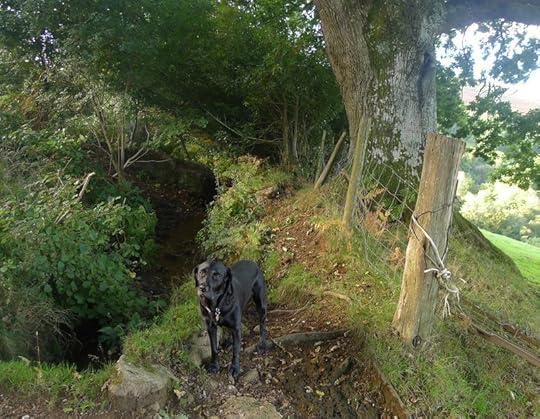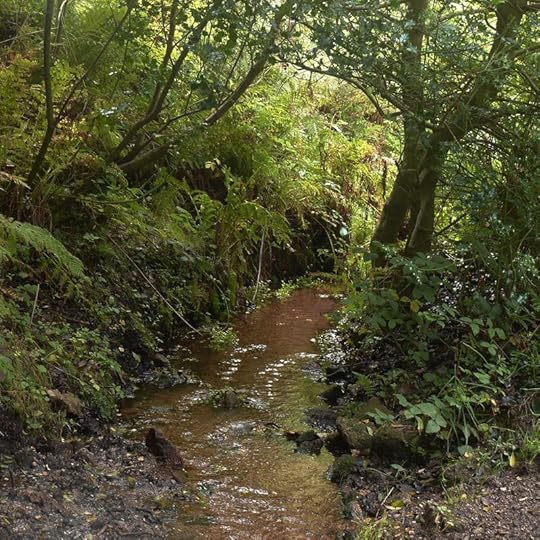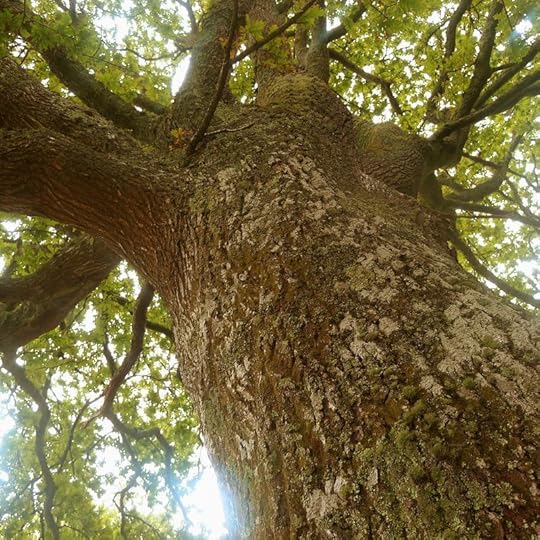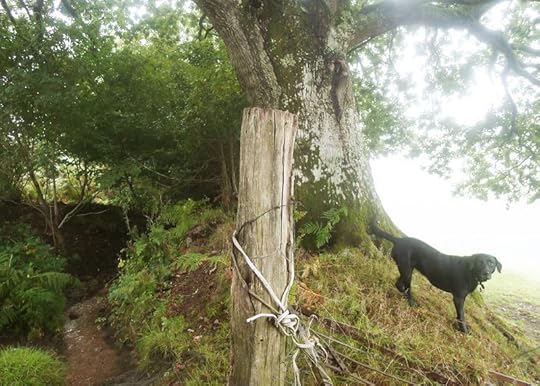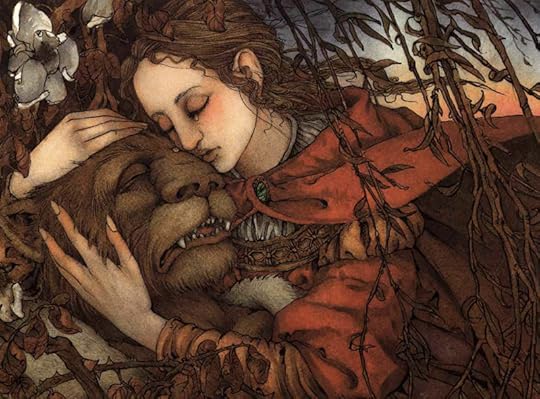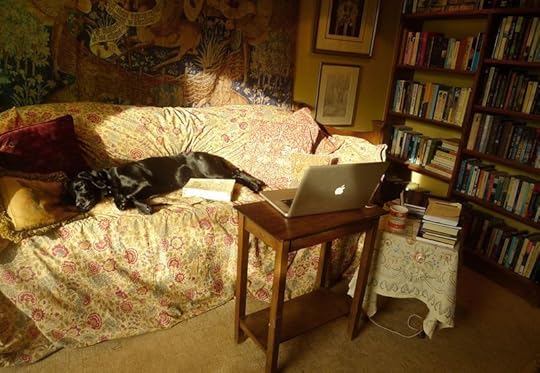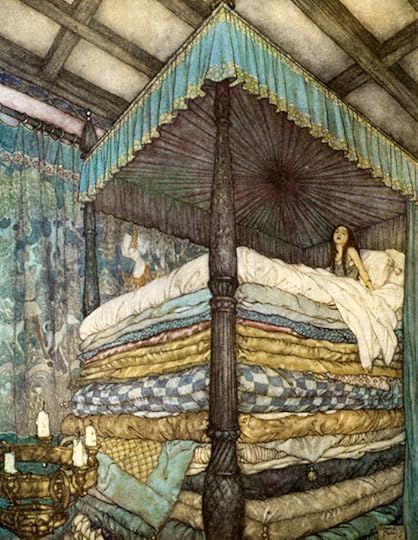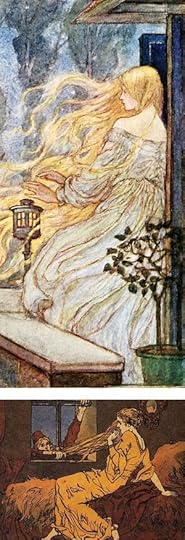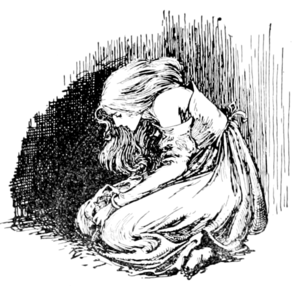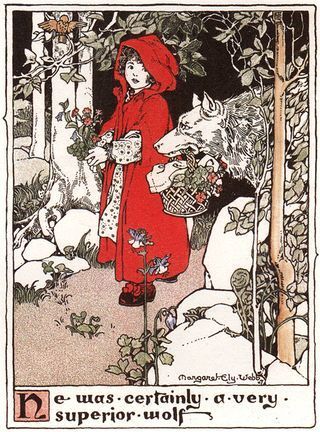Terri Windling's Blog, page 178
October 15, 2013
Reading in the woods
''A book is made from a tree. It is an assemblage of flat, flexible
parts (still called 'leaves') imprinted with dark pigmented squiggles.
One glance at it and you hear the voice of another person, perhaps
someone dead for thousands of years. Across the millennia, the author is
speaking, clearly and silently, inside your head, directly to you.
Writing is perhaps the greatest of human inventions, binding together
people, citizens of distant epochs, who never knew one another. Books
break the shackles of time -- proof that humans can work magic.''
- Carl
Sagan (Cosmos)
"In
the ancient world -- indeed, until the dawn of the modern
nation-states -- the power of reading actually did mean something like
membership of a secret elite; linguistic knowledge once counted in
many places as the provenance of sorcery. In Middle English the word
'glamour' developed out of the word 'grammar'. The person who could
read would be thought easily capable of other impossibilities."
- Peter Sloterdij ("The Elmauer Rede")
"[But] just as unseen worlds unfold to those who read a book, so worlds
hidden to hurried sight unfold to those who choose to spend more than a
few moments cultivating their relationship with nature. Paying attention
is the key: we interact with each other when we allow it to engage our
attention, when we 'read' it with absorption, as we would read a book.
[Even] the ficus tree in the office cubicle or the oak planted in the
urban sidewalk offers undreamed-of wonders to those who pay attention.
Just because to literate people reading a book is unremarkable,
available to anyone who can learn the alphabet, it is no less magical.
Among my people, children are taught to read books; among some other
peoples, children are taught to read the trees."
- Priscilla Stuckey (Kissed by a Fox, And Other Stories of Friendship in Nature)
Sitting in the woods on a damp autumn day, I read stories composed of ink on paper while Tilly reads stories of sound and scent. The wind ruffles brown leaves, white pages, black fur, and tangles my yellow hair. It, too, has a story to tell us. Listen, it says. Once upon a time...
October 14, 2013
The Peace of Wild Things
During my coffee break beside the stream yesterday, I was struck by the following words in Priscilla Stuckey's lovely collections of essays, Kissed by a Fox (and Other Stories of Friendship in Nature):
"If mind belongs to humans alone," she writes, "then stones, trees, and streams become mere objects of human tinkering. We can plunder the earth's resources with impunity, treating creeks and mountaintops in Kentucky or rivers in India or forests in northwest America as if they existed only for economic development. Systems of land and river become inert chunks of lifeless mud or mechanical runs of H2O rather than the living, breathing bodies upon which we and all other creatures depend for our very lives.
"Not to mention what 'nature as machine' has done to our emotional and spiritual well-being. When we regard nature as churning its way forward mindlessly through time, we turn our backs on mystery, shunning the complexity as well as the delights of relationship. We isolate ourselves from the rest of the creatures with whom we share this world. We imagine ourselves the apex of creation -- a lonely spot indeed. Human minds become the measure of creation and human thoughts become the only ones that count. The result is a concept of mind shorn of its wild connections, in which feelings become irrelevant, daydreams are mere distractions, and nighttime dreams -- if we attend to them at all -- are but the cast-offs of yesterday's overactive brain. Mind is cut off from matter, untouched by exingencies of mud or leaf, shaped by whispers or gales of wind, as if we were not, like rocks, made of soil.
"And then we wonder at our sadness and depression, not realizing that our own view of reality has sunk us into an unbearable solipsism, an agony of separateness -- from loved ones, from other creatures, from rich but unruly emotions, in short, from our ability to connect, through senses and feeling and imagination, with the world that is our home."
A little later in the same essay she writes:
"And here lies the crux of the matter: to say that nature is personal may mean not so much seeing the world differently as acting differently -- or, to state it another way, it may mean interacting with more-than-human others in nature as if those others had a life of their own and then coming to see, through experience, that these others are living, interactive beings.
"When nature is personal, the world is peopled by rocks, trees,
rivers, and mountains, all of whom are actors and agents, protagonists
of their own stories rather than just props in a human story. When Earth
is truly alive, the world is full of persons, only some of whom are
human."
In an essay on animal consciousness published in Lapham's Quaterly, John Jeremiah Sullivan notes:
"If we put aside the self-awareness standard -- and really, how arbitrary
and arrogant is that, to take the attribute of consciousness we happen
to possess over all creatures and set it atop the hierarchy, 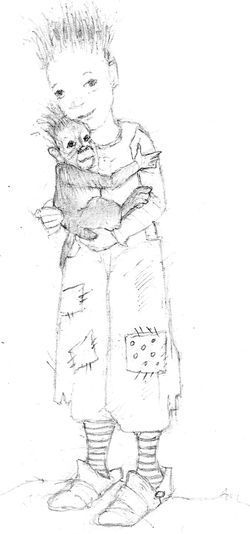 proclaiming
proclaiming
it the very definition of consciousness (Georg Christoph Lichtenberg
wrote something wise in his notebooks, to the effect of: only a man can
draw a self-portrait, but only a man wants to) -- it becomes possible to
say at least the following: the overwhelming tendency of all this
scientific work, of its results, has been toward more consciousness.
More species having it, and species having more of it than assumed. This
was made boldly clear when the 'Cambridge Declaration on Consciousness'
pointed out that those 'neurological substrates' necessary for
consciousness (whatever 'consciousness' is) belong to 'all mammals and
birds, and many other creatures, including octopuses.' The animal
kingdom is symphonic with mental activity, and of its millions of
wavelengths, we’re born able to understand the minutest sliver. The
least we can do is have a proper respect for our ignorance.
"The philosopher Thomas Nagel wrote an essay in 1974 titled, 'What Is
It Like To Be a Bat?,' in which he put forward perhaps the least
overweening, most useful definition of 'animal consciousness' ever
written, one that channels Spinoza’s phrase about 'that nature belonging
to him wherein he has his being.' Animal consciousness occurs, Nagel
wrote, when 'there is something that it is to be that organism -- something it is like for
the organism.' The strangeness of his syntax carries the genuine
texture of the problem. We’ll probably never be able to step far enough
outside of our species-reality to say much about what is going
on with them, beyond saying how like or unlike us they are. Many things
are conscious on the earth, and we are one, and our consciousness feels
like this; one of the things it causes us to do is doubt the
existence of the consciousness of the other millions of species. But it
also allows us to imagine a time when we might stop doing that."
Amen.
In addition to Stuckey's book and Sullivan's essay, I recommend Brandon Kein's "Being a Sandpiper" (Aeon); Stephen M. Wise's "Nonhuman Rights to Personhood" (pdf); and Karen Joy Fowler's brilliant and devastating new novel, We Are All Completely Beside Ourselves. (Avoid reviews of the latter if you possibly can. The less you know about the story before you read it, the more wonderful it is.)
Post script to the writers and readers who participated in last week's Poetry Challenge: There are still new poems
(plus poetry feedback and discussion) appearing in the Comment threads of last week's posts -- so I'll keep the Comments open for a little while longer. Do be sure to have a look.
October 13, 2013
Tunes for a Monday Morning
One of my absolute favorite albums of the last few years is Natalie Merchant's "Leave Your Sleep," featuring 19th & 20th century poems about childhood put to music. The poets she's chosen range from the well-known to obscure, including Christina Rossetti, Ogden Nash, Eleanor Farjean, Gerald Manley Hopkins, and Mervyn Peake. (There's also a Leave Your Sleep children's book, illustrated by Barbara McClintock.) All of the videos here today come from this marvelous project.
Above, "Nursery Rhyme of Innocence and Experience," from a poem by Charles Causley.
Below, "The Man in the Wilderness," from an anonymous children's poem.
Next, a song I absolutely love:
"If No One Ever Marries Me," from a poem by Laurence Alma-Tadema (daughter of the painter Sir Lawrence Alma-Tadema, by his first wife)...who did, in fact, never marry.
(Plus a bonus song at the end, a rendition of the American folk classic, Bury Me Underneath the Willow Tree.)
And last:
Here's a fascinating video about the project: the music, the poets, etc..
October 11, 2013
Poetry Challenge Week: Last Day
Sharpen your pencils and rev your computer engines, it's the last day of the Poetry Challenge. Our theme is the "Beauty and the Beast" fairy tale. I'll post the rules of the game one more time:
I am
challenging all you poets out there to share a poem (or poems) on
the theme of the day. Brand new poems are encouraged, but your older
poems are welcome too. You
don't have to be a published poet to contribute; you don't have to be a
regular reader of this blog; and you don't even have to
be an adult (but if you're a child, please let us know your age). To
participate, just post your poem(s) in the comments thread below. Reader
feedback on the poems is encouraged and deeply appreciated.
Speaking of feedback, do check in on the Comment threads from earlier in the week, where lovely new poems keeping appearing, as if by magic....
The original version of "Beauty and the Beast" was written in 1740 by
Madame Gabrielle–Suzanne de Villeneuve, who was part of the "second
wave" of writers of literary fairy tales in 17th/18th century France.
To read a brief history of the tale, go here. To read more about the salon fairy tales of France, go here.
We have a gorgeous poem from the JoMA archives to start us off today: Jane Yolen's "Beauty and the Beast: An Anniversary." Jane is the author of over three hundred books, including poetry collections for both
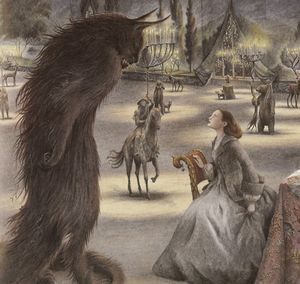 children and adults. Her latest collection is Sister Fox's Field Guide to the Writing Life, which can be ordered from Unsettling Wonder.
children and adults. Her latest collection is Sister Fox's Field Guide to the Writing Life, which can be ordered from Unsettling Wonder.
Beauty and the Beast:
An Anniversary
It is winter now,
and the roses are blooming again,
their petals bright against the snow.
My father died last April; my sisters no longer write,
my sisters no longer write,
except at the turning of the year,
content with their fine houses
and their grandchildren.
Beast and I
putter in the gardens
and walk slowly on the forest paths.
He is graying around the muzzle
and I have silver combs
to match my hair.
I have no regrets.
None.
Though sometimes I do wonder
what sounds children
might have made
running across the marble halls,
swinging from the birches
over the roses
in the snow.
The Beauty and the Beast art above is by Mercer Mayer, Eleanor Vere Boyle (1825-1916), and Angela Barrett. "Beauty and the Beast: An Anniversary" first appeared in The Faery Flag by Jane Yolen, and was subsequently reprinted in The Journal of Mythic Arts. It was also recorded by June Tabor on her album Against the Stream, with music by Huw Warren. The poem is copyright c 1989 by Jane Yolen; all rights reserved by the author.
If
you post a poem and it doesn't appear right away, don't worry.
Sometimes Typepad routes comments to the Spam box -- but I'm checking
the box regularly, so your poem will eventually appear.
What Tilly does while I'm working
"If you want your children to be intelligent, read them fairy tales. If you want them to be more intelligent, read them more fairy tales." - Albert Einstein
"When
I was ten, I read fairy tales in secret and would have been ashamed
if I had been found doing so. Now that I am fifty I read them openly.
When I became a man I put away childish things, including the fear of
childishness and the desire to be very grown up." - C.S. Lewis
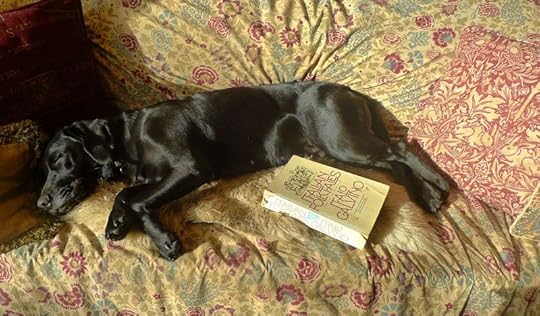 Click on the photos for larger versions. Or visit Tilly's new Tumblr here.
Click on the photos for larger versions. Or visit Tilly's new Tumblr here.
October 10, 2013
Poetry Challenge Week: Day 4
The theme for the Poetry Challenge today is "Animal Brides and Bridegrooms," by which I mean I'm looking for poems inspired by the myths and folk tales found the world over in which men and women are courted by or marry animal spouses (or animal shapeshifters, like selchies) .
The featured poem today (from the JoMA archives) is "The Girl Who Married the Reindeer" by the Irish poet Eiléan Ní Chuilleanáin...but please note that your poem(s) needn't be about reindeer. Any animal (bird, fish, etc.) will do. Fox women, bear suitors, snake bridegrooms, tortoise brides, frog princes and princesses, crane wives, etc. etc. -- they're all good. (But save your "Beauty & the Beast" poems for our last Poetry Challenge tomorrow, even though it's technically an Animal Bridegroom story. And now I've given away tomorrow's theme, so you have extra time to prepare!)
To read more about Animal Bride/Bridegroom tales, go here. For the rules of the Poetry Challenge, go here.
I'm grateful to all of the writers who are contributing poems, and also to all of the readers who are kindly commenting on them. Do check in on yesterday's Comments thread, as some wonderful new poems have appeared there overnight....
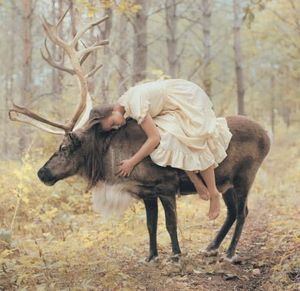 The Girl Who Married a Reindeer
The Girl Who Married a Reindeer
I
When she came to the finger-post
She turned right and walked as far as the mountains.
Patches of snow lay under the thorny bush
That was blue with sloes. She filled her pockets.
The sloes piled into the hollows of her skirt.
The sunset wind blew cold against her belly
And light shrank between the branches While her hands raked in the hard fruit.
While her hands raked in the hard fruit.
The reindeer halted before her
And claimed her as his wife.
She rode home on his back without speaking,
Holding her rolled–up skirt,
Her free hand grasping the wide antlers
To keep her steady on the long ride.
II
How could they let her go back to stay
In that cold house with that strange beast?
So the old queen said, whose son her sister had married.
Thirteen months after she left home
She'd travelled hunched on the deck of a trader
Southwards to her sister's wedding.
Her eyes reflected acres of snow,
Her breasts were large from suckling,
There was salt in her hair.
They met her staggering on the quay;
They put her in a scented bath,
Found a silken dress, combed her hair out.
They slipped a powder in her drink
So she forgot her child, her friend,
The snow, and the sloe gin.
III
The reindeer died when his child was ten years old.
Naked in death his body was a man's.
Young, with an old man’s face and scored with grief.
When the old woman felt his curse, she sickened,
She lay in her tower bedroom and could not speak.
The young woman who had nursed her grandchildren nursed her.
IV
The boy from the north stood in the archway
That looked into the courtyard where water fell,
His arm around the neck of his companion —
A wild reindeer staggered by sunlight.
His hair was bleached, his skin blistered.
He saw the woman in wide silk trousers
Come out of the door at the foot of the stairs,
Sit on a cushion and stretch her right hand for a hammer.
She hammered the dried, broad beans one by one,
While the swallows timed her, swinging side to side:
The hard skin fell away, and the left hand
Tossed the bean into the big brass pot.
It would surely take her all day to do them all.
She saw the child watching, her face did not change.
A light wind fled over them
As the witch died in the high tower.
She knew her child in that moment:
His body poured into her vision
Like a snake pouring over the ground,
Like a double–mouthed fountain of two nymphs,
The light groove scored on his chest
Like the meeting of two tidal roads, two oceans.
The art above is: "Gerda and the Reindeer" by Edmund Dulac (1882-1953); a photograph by Katerina Plotnikova, "Gerda and the Reindeer" drawing (1913, artist unknown);a detail from a painting by Ivan Bilibin (1876-1942);"The Horned Man," a sculpture by Wendy Froud; a reindeer photograph; and two more images by the Russian surrealist photographer Katerina Plotnikova. The poem above, "The Girl Who Married the Reindeer," is copyright c 1995 by Eiléan Ní Chuilleanáin; all rights are reserved by the author. The poem first appeared in The Southern Review (Autumn 1995), and was subsequently reprinted in the Journal of Mythic Arts and the author's collection The Girl Who Married the Reindeer (Gallery Press, Ireland)
If
you post a poem and it doesn't appear right away, don't worry.
Sometimes Typepad routes comments to the Spam box -- but I'm checking
the box regularly, so your poem will eventually appear.
October 9, 2013
Poetry Challenge Week: Day 3
Today, I'm looking for poems based on the fairy tales of Hans Christian Andersen, such as The Little Mermaid, The Snow Queen, The Matchgirl, The Tinderbox, The Nightingale, and so forth. Choose which ever tale you want, just make sure it's Andersen's and not someone else's (like Charles Perrault or the Brothers Grimm).
The poem I've posted below, for example, was inspired by HCA's "The Princess and the Pea." (But poetry based on any Andersen tale is welcome, you needn't stick this one.)
A full list of Andersen's fairy tales can be found here. My article on HCA's fascinating life can be found here.
The rules of the Challenge are listed in the first post in this series; if you are new to the Challenge, please read them before you post. Thank you, once again, to everyone who has contributed poetry so far; and also to all the lovely readers who have taken the time to give the poets their feedback. Your generosity is overwhelming.
To start us off today, here's Joseph Stanton's wry and utterly charming take on "The Princess and the Pea." Joe is the author of Imaginary Museum and other wonderful works of poetry and prose. 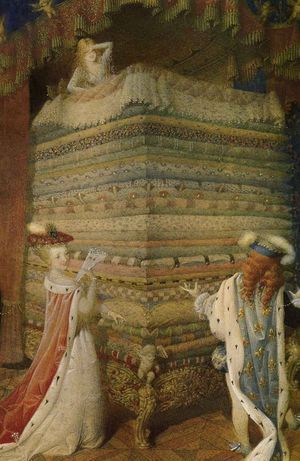 He teaches at the University of Hawai'i at Mano.
He teaches at the University of Hawai'i at Mano.
Princess and the Pea
The extremity of her sensitivity
impressed a richly idle princely family,
of her discomfort, bothered as she had to be
by the absurd softness of the ample beddings,
not to mention the pillow piles aggravating
her much lamented acrophobic dis-ease.
As years passed by, she taught her king
how a board under the mattress aids the spine
and keeps it straight and ready for laughter.
Under her guidance, both wise and refined,
the kingdom prospered, happily ever after.
(Other fairy-tale-inspired poems by Joe can be read here, here, and here.)
The Princess and the Pea art above is by the French illustrator Edmund Dulac (1882-1953), the Russian illustrator Gennady Spirin, and the Spanish photographer Eugenio Recuenco. The portrait of Hans Christian Andersen is by the "Dutch Golden Age" painter Constantin Hansen (1804-1880). The poem above, "Princess and the Pea," first appeared in The Journal of Mythic Arts, copyright c 2006 by Joseph Stantion; all rights are reserved by the author.
October 8, 2013
Poetry Challenge Week: Day 2
The theme for the Poetry Challenge today is "Rapunzel." Judging by the fact that there are fewer Rapunzel-inspired poems than Red-Riding-Hood-inspired poems in publication, this is a slightly harder challenge...but I'm certain the Mythic Arts community is up to finding new approaches to the tale.
The rules of the Challenge can be found in the first post in the series; they're simple, but please read them before you post. Many thanks to all of you who have contributed poems so far, and also to everyone who has been participating by giving the poets feedback.
To kick today's Challenge off, here's a fine Rapunzel poem (from the JoMA archives) by Jeannine Hall Gailey: "Rapunzel: I Like the Quiet." Jeannine is the author of three collections rich in works inspired by myth, folklore, and fairy tales: Female Comic Book Superheroes, Becoming the Villainess, and She Returns to the Floating Word. She's the Poet Laureate of Redmond, Washington, and teaches at National University.
Solitude my solace, wrapped around me
like layers of golden hair. Stacks of books
and I can sing as loud as I please all day
and night.
In sleep I kick and snore, during the day,
delight
in eating nothing but radishes and lime leaf tea.
Who says I need a partner to dance? Here
in this tower I am mistress of all; the reindeer,
the knight’s armor teetering in the corner,
various discarded disguises, crowns,
crumbs and bones. Will you rescue me?
What kingdom will replace my bounty
of leisure, what tether of care and nurture
do you wish to rope my neck with?
For the history of the Rapunzel fairy tale (and excerpts from other Rapunzel poems) go here. To read another Rapunzel poem from Jeannine, go here.
The Rapunzel paintings above are by Paul O. Zelinksy, Florence Harrison (1877-1955), Ernst Liebermann (1869-1960), and Arthur Rackham (1867-1939). The black-and-white fairy tale decoration is by Helen Stratton (1891-1925). The poem above, "Rapunzel: I Like the Quiet" made its first appearance in The Journal of Mythic Arts. It is copyright c 2008 by Jeannine Hall Gailey; all rights reserved by the author.
If you post a poem and it doesn't appear right away, don't worry. Sometimes Typepad routes comments to the Spam box -- but I'm checking the box regularly, so your poem will eventually appear.
October 7, 2013
Poetry Challenge Week: Day 1
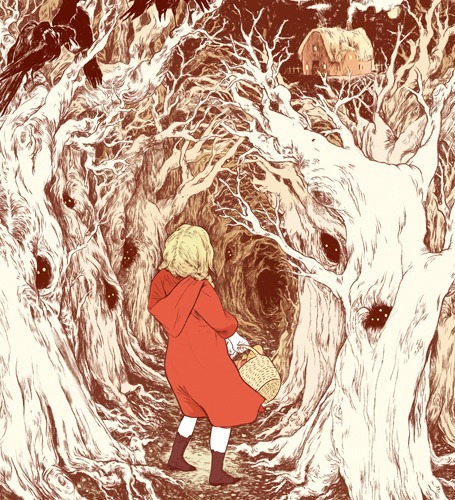
Inspired by your response to the Ondine post, it's Poetry Challenge Week here on Myth & Moor.
I
am challenging all you poets out there to share a poem (or poems) on
the theme of the day. There are no rules beyond adhering to the theme:
brand new poems are encouraged, but your older poems are welcome too. You
don't have to be a published poet to contribute; you don't have to be a regular reader of this blog; and you don't even have to
be an adult (but if you're a child, please let us know your age). To participate, just post your poem(s) in the comments thread, along with your name and geographical location.
(Regular comments are welcome too, of course.)
I'll
start the ball rolling each morning by posting a poem from the Journal of Mythic Arts archives, along with related imagery.
Today, I'm looking for poems inspired by the Little Red Riding Hood fairy tale. Here's an excellent one by my friend and publishing colleague Lawrence Schimel, who lives in Madrid, Spain:
"Even in the kitchen there was
the smell of journey"
- Anne Sexton, "Little Red Riding Hood"
1. In a tupperware wood, mix child and hood. Stir slowly. Add wolf.
2. Turn out onto a lightly floured path, and begin the walk home from school.
3. Sweeten the journey with candied petals: velvet tongues of violet, a posy of roses. Soon you will crave more.
4. Knead the flowers through the dough as wolf and child converse, tasting of each others flesh, a mingling of scents.
5. Now crack the wolf and separate the 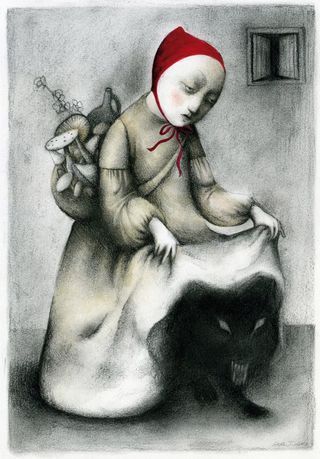 whites—the large eyes, the long teeth—from the yolks.
whites—the large eyes, the long teeth—from the yolks.
6. Fold in the yeasty souls, fermented while none were watching. You are too young to hang out in bars.
7. Cover, and, warm and moist, let the bloated belly rise nine months.
8. Shape into a pudgy child, a dough boy, lumpy but sweet. Bake half an hour.
9. Just before the time is up—the end in sight, the water broken–split the top with a hunting knife, bone-handled and sharp.
10. Serve swaddled in a wolfskin throw, cradled in a basket and left on a grandmother's doorstep.
11. Go to your room. You have homework to be done. You are too young to be in the kitchen, cooking.
If you'd like to know more about the history of the Little Red Riding Hood fairy tale, go here.
The Little Red Riding Hood art above is by Jillian Tamaki, Walter Crane (1845-1915), Margaret Ely Webb (1877-1965), Ana Juan, and (the last two paintings) Lisbeth Zwerger. "Journeybread Recipe" by Lawrence Schimel appeared in Black Thorn, White Rose (Avon Books) and The Journal of Mythic Arts. It is copyright c 1994 by Lawrence Schimel; all rights reserved by the author.
October 5, 2013
Tunes for a Monday Morning
Today, musical adaptations of classic poems....
Above, "The Stolen Child" by William Butler Yeats is put to music by the Canadian musican, composer, and music historian Loreena McKennitt. (The Waterboys, from Ireland, recorded a wonderful version of it too. You can hear it here.)
Below, The Waterboys perform "Song of the Wandering Aengus," with lyrics drawn from another Yeats poem.
Below, a musical rendition of Shakespeare's "Sonnet 29" by the American/Canadian singer-songwriter Rufus Wainwright (son of the legendary folk musicians Loudon Wainwright and Kate McGarrigle).
Next, Emily Dickinson's "Hope is a Thing With Feathers," put to music by Trailer Bride from North Carolina.
Scotland's Robert Burns wrote poems and songs, the lines sometimes blurred between the two. In the video below, Scottish singer/songwriter Roddy Woomble sings Burns' "I'll Meet Thee on the Lea Rig." (Karine Polward does a rather nice version too. You can hear it here.)
And last, Loreena McKennitt again, this time with "The Highwayman," from the poem by Alfred Noyes.
Terri Windling's Blog
- Terri Windling's profile
- 708 followers








